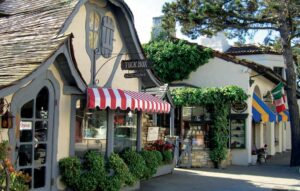The Placer County Courthouse, Lincoln – CA, an architectural marvel with a rich history that spans over a century, stands as one of the most distinctive edifices in Auburn, California. Constructed in 1898, this historical building has served as a testament to the architectural and cultural shifts of various eras.
Its design elements and key features offer an intriguing glimpse into the past while exhibiting timeless beauty and function. This landmark is not merely a structure made of bricks and mortar; it represents the collective memory and identity of Placer County itself.
Delving into the intricate details of its architecture will shed light on its unique features that make it more than just a courthouse. The exploration promises to evoke a sense of belonging among readers by connecting them with their shared heritage represented by this enduring symbol of justice.
By understanding these detailed aspects, one uncovers not only fascinating insights about construction techniques employed during its time but also unravels stories woven around each distinct feature. Thus, the following discourse aims to embark upon an enlightening journey through time via exploring this architectural gem – The Placer County Courthouse.
History of the Building
The Placer County Courthouse, a monumental example of the Italianate style, was erected in 1898 amidst some controversy over its extravagant cost. Yet it has since been regarded as a significant historical landmark that captures the essence of late 19th-century architecture.
The courthouse reflects not only the architectural trends prevalent at the time but also mirrors the area’s rich history and economic prosperity derived from gold mining. This structure, designed by architect John M. Curtis and built under contractor J.W. Foy’s supervision, features distinctive elements such as an octagonal clock tower dominating Auburn’s skyline, elaborate interior woodwork, and substantial use of Sierra white granite.
The creation of this grand edifice had its roots in Lincoln, California Gold Rush era when Placer County became a bustling hub for miners seeking fortune. As the county seat shifted from Old Auburn to present-day Auburn in 1851, there emerged a need for an imposing courthouse that would symbolize law and order during these tumultuous times. An earlier building was constructed but proved inadequate to meet rising demands; hence plans were initiated to construct a new courthouse.
Its construction was funded by bonds approved by voters despite some opposition over ballooning costs – an investment that is now viewed as worthwhile given its cultural significance.
Without resorting to cliched closing phrases, one can express that this majestic structure continues to serve justice while being an enduring emblem of Placer County’s historical evolution. It stands testament to meticulous craftsmanship and architectural brilliance from yesteryears which have remained undiminished even after more than a century of existence.
The beauty and sophistication embedded in each element of this iconic building provide onlookers with a sense of belongingness as it resonates with their shared history and collective memory – indeed, exploring its distinctive elements is akin to traveling back in time through California’s rich past.
Key Features and Design Details
Impeccable craftsmanship is on display in every corner of this historic edifice, with key features and design details that signify its rich architectural heritage.
The Placer County Courthouse stands as an exemplary model of Italianate style architecture, a genre that was immensely popular during the mid to late 19th century. It presents itself with a symmetrical façade characterized by tall, narrow windows and elaborate cornice structures. Notably, the courthouse’s hallmark feature is its intricate clock tower, which rises majestically above the structure, serving not only as an aesthetic focal point but also as a symbol of authority and order.
Within the confines of this grand building lies equally remarkable interior detailing that complements its external grandeur. The main courtroom represents a magnificent example of Victorian design principles with high ceilings adorned with ornate plasterwork and wall panels highlighted by hand-painted stencils. The ironwork railings and heavy wooden doors provide further testament to the meticulous attention paid to even the smallest detail within the structure. An unexpected element within such an imposing structure is the beautifully lit atrium at its core; providing natural light throughout most parts of the building thereby enhancing visibility whilst lending it an airy ambiance.
Beyond structural elements, one can’t ignore how well-integrated symbolic representations are within this architectural marvel. For instance, various depictions of justice—a blindfolded woman holding scales—are found throughout different sections within both interior and exterior spaces, reinforcing law’s impartial nature. Furthermore, materials used for construction—locally sourced granite for exterior walls or California redwood for interiors—reflect community connection while insinuating durability and resilience resonant with judicial systems’ ideals themselves.
Without doubt, each aspect embedded in Placer County Courthouse’s design contributes towards creating not just a functional civic space but also serves as visual narrative on legal symbolism and local history.
https://perfectsolutionsgaragedoor.com/embrace-tranquility-and-serenity-at-mcbean-memorial-park/


